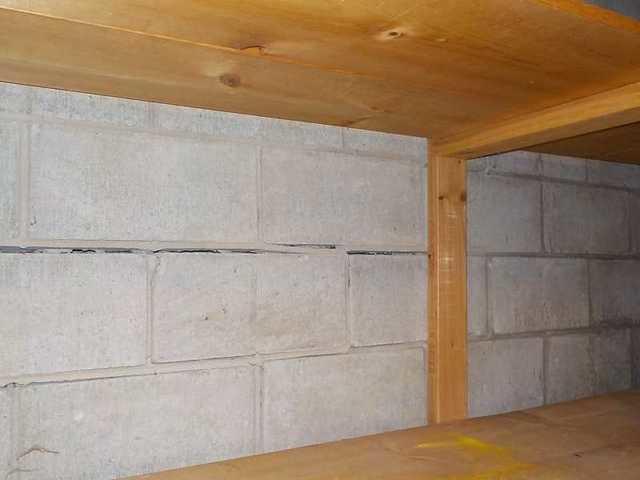
Horizontal Crack in Basement Block Wall
Wall cracks are usually a sign of a foundation problem, and left alone for too long can lead to total wall failure.
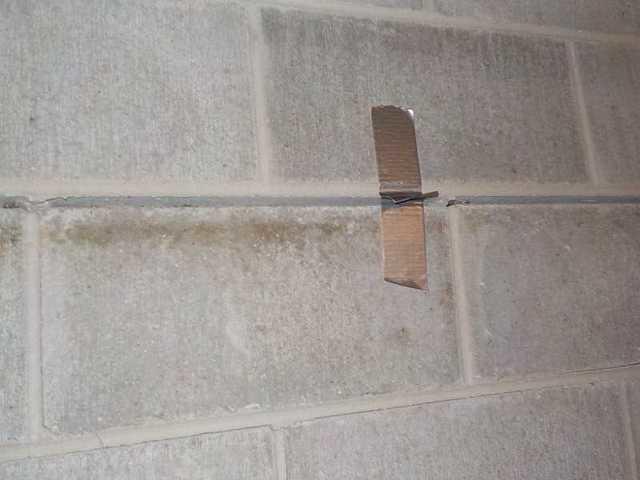
Duct Tape is Not an Effective Crack Repair Method
While we're sure this was a method of noting the location of a crack, rather than an attempt at repair, it's still important to note that wall cracks cannot be repaired with tape, glue, caulk, or happy thoughts.
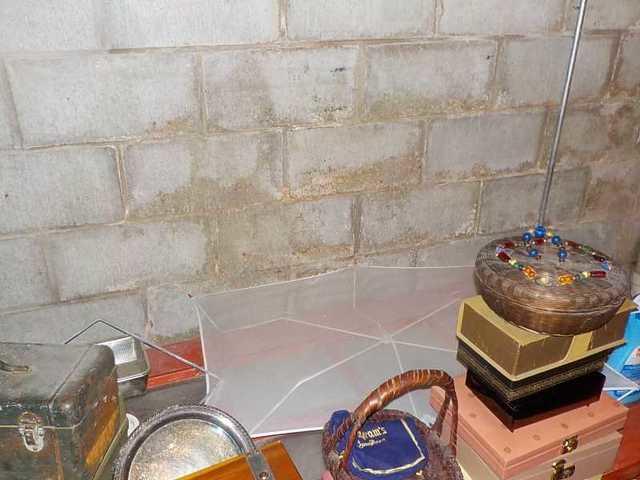
Eroding Block Wall in Basement
The block wall is eroding and weakening, upping the chance for wall failure in the basement.

Stairstep Crack in Block Basement Wall
This stairstep crack is another sign of wall failure. Note the darkened area around the crack - this is a point of entry for water. The water is a double-edged sword, as it floods the basement and also continues weakening the wall.
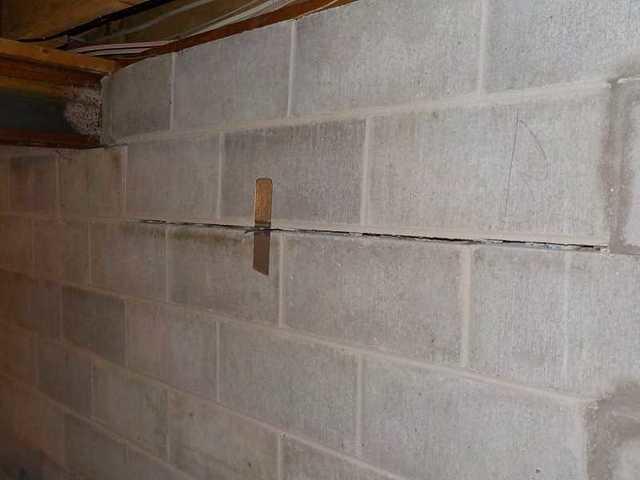
Extensive Wall Crack in Block Basement Wall
Our friendly piece of duct tape from earlier can be seen at the left side of the photo. This is a large crack, indicative of a major problem.
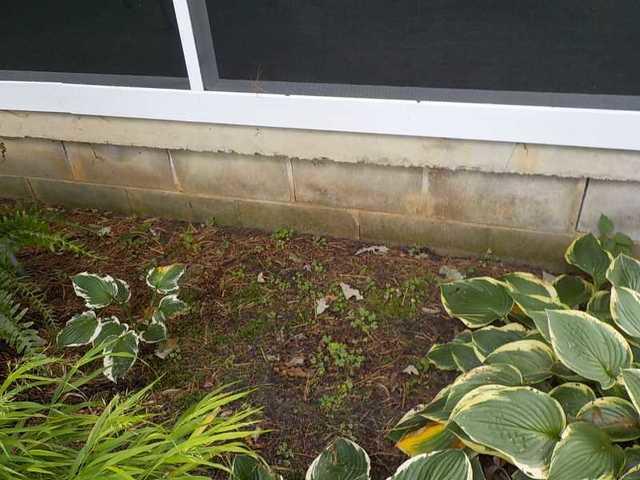
Outside View of Basement Wall Cracks
Evidence that a wall crack is rarely just an inside problem. These cracks travel all the way to the outside of the wall, which explains the water problem.
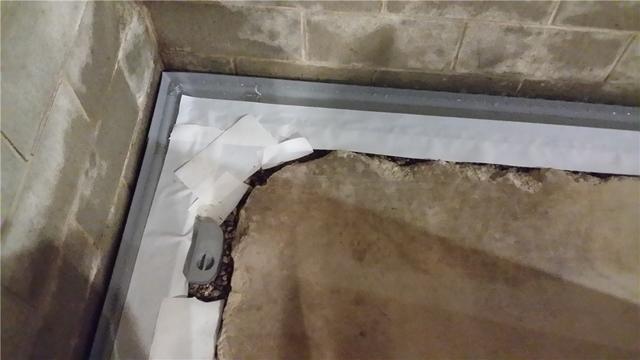
WaterGuard Installation in Progress
The WaterGuard track is installed around the perimeter of the basement, allowing water to drain to the sump pump.
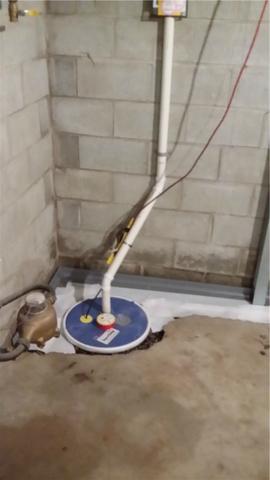
Super Sump Removes Water from Basement
The WaterGuard is tied into the Super Sump sump pump, allowing water to drain directly into the pump and immediately be directed to discharge lines.
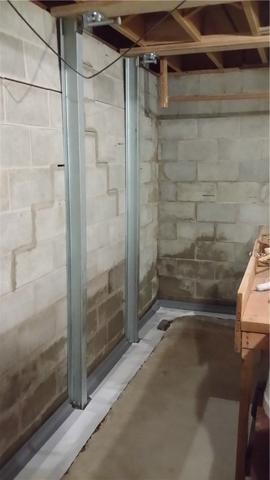
PowerBrace and Joist Installation
The PowerBraces are supported across the ceiling by new joists.
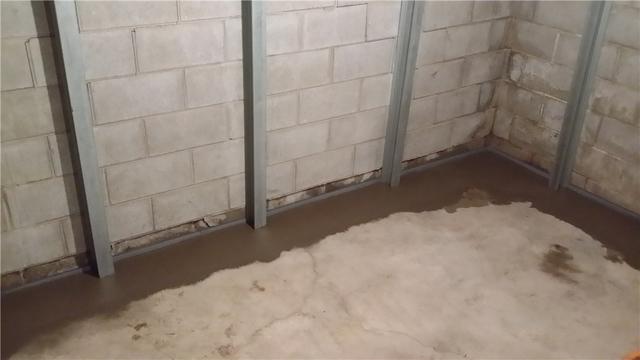
PowerBraces Installed to Reinforce and Straighten Wall
Eleven PowerBraces were installed on the affected walls. The braces provide support to the wall structure to prevent it from cracking further or, worse yet, caving in. Also shown, the result of the WaterGuard installation after new concrete is poured to restore the floor.









